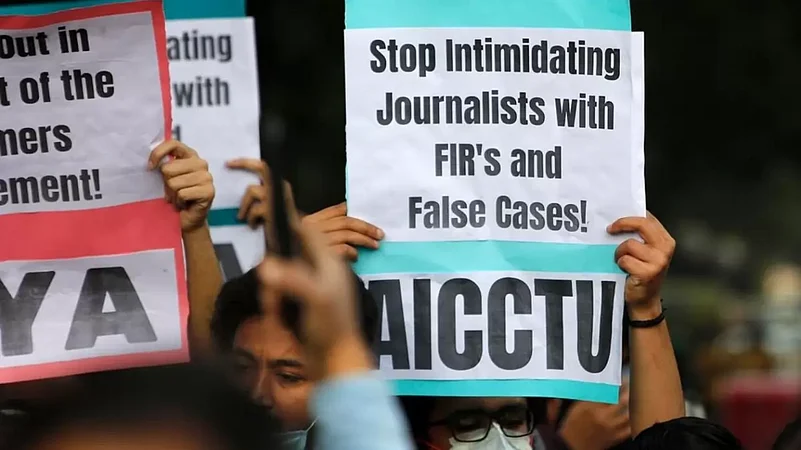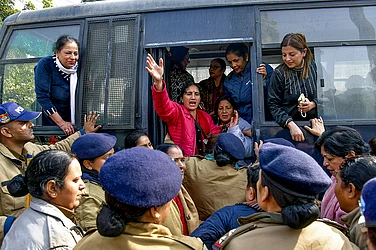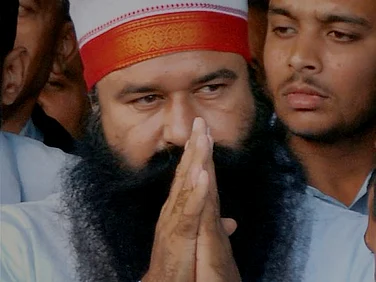Renowned journalist Jonathan Foster beautifully encapsulated a journalist’s role as the crusader of social change when he said that their job is not just to listen to what one person says- “It is raining outside” and to what another says, “It’s dry outside” and simply repeat the comments; rather they need to actually look outside the window to determine and present the ‘truth’ with one’s words and work.
When the truth is stifled somewhere, the media stands tall as the fourth pillar of democracy to separate the facts from the fluff. While all citizens of the country are entitled to enjoy the right to freedom of speech and expression, the press have for long exercised this right with a sense of cardinal responsibility to herald meaningful social change.
Historically, India’s independence movement remained closely bound to press freedom, wherein the two mutually reinforced each other. The more the press exhibited resilience and courage to denounce colonial oppression, the more the freedom struggle succeeded in challenging the Britishers.
The role of media during Indian freedom movement
Most leaders of the Indian National Congress were passionate writers themselves and many were credited with running journals and newspapers that fuelled a sentiment of nationalism through the written words.
For instance, while attempting to exert public pressure to stop the notorious 1905 Bengal partition plan, K.K Mitra and Surendranath Banerjee wrote regular columns in newspapers such as Bengalee, Hitabadi, and Sanjibani, highlighting the true intentions of the foreign rulers to simply divide Bengal, a hotbed of nationalistic fervour, on religious lines and sow communal discord.
Similarly, the representative of the radical Congress, Bal Gangadhar Tilak wrote extensively in his journals Kesari and Mahratta, propagating revolutionary ideas to collectively strengthen India’s’ fight against colonial miseries. One of his editorials read “God has not conferred upon foreigners the grant inscribed on a copper plate of the kingdom of Hindustan…Do not circumscribe your vision like a frog in the well.” The power of the pen enhanced the self-confidence of the masses to fight against a mighty imperial nation, but it also landed Tilak in prison on charges of sedition.
Likewise, weekly magazine Yugantar and its editors Bhupendranath Dutta and Barindra Kumar Ghosh were at the forefront of extolling revolutionary sentiment amongst Indians. One of their articles still holds resonance with our spirits, when it said “The remedy always lies with the people. The 30-crore people inhabiting India must raise their 60 crores hands to stop this curse of oppression. Force must be stopped by force.”
The Critical Media: Resistance is the only Truth
But even before the freedom struggle acquired any concrete shape, press and literature played a key role in exposing the real nature of the Britishers’ oppressive rule.
Editorials in newspapers regularly covered a thorough critique of Britain’s economic imperialism in India. Dadabhai Naoroji whereas spoke of the drain of wealth from India, the journal Payam-e-Azadi brought to light the divide and rule policies used by the colonial masters to break the growing unity.
The media during freedom movement thus stood steadfast against the colonial impositions and showed how resilience always pays back. Journalism worked as a mirror for society and an exposé for British rule that was ready to do anything to curtail down India’s growing quest for freedom.
Underground newspapers, journals, and radio stations also made an immense contribution towards upholding the revolutionary character of the struggle. Whenever the state came down heavily on those who were visibly opposing its brutality, the underground journalists maintained the steam of the movement.
For example, a 22-year-old student, Usha Mehta, ran the Congress Radio in 1942 during the Quit India Movement, when many of our mainstream leaders had been locked up in prisons. “This is the Congress Radio calling on 42.34 metres from somewhere in India,” pronounced Mehta from a ghost transmitter.
She became a literal voice of resistance against colonial powers, with her radio regularly broadcasting Gandhiji’s speeches that didn’t let the morale of the masses go astray. She dodged the Britishers’ iron rod for more than three months, moving from Bombay to Jamshedpur to Chaittagong. Her patriotic fervour fuelled the zeal of the rebellion, which ultimately forced the government to release many leaders from jail.
Government changes, not the fate of journalists
While the socio-political climate may be significantly altered in present times, the quest for searching and presenting the truth is a passion journalists have inherited from their ancestors.
Renowned journalist Rana Ayyub has made her mark by reporting on the 2002 Gujarat communal riots in her book Gujarat Files: Anatomy of a Cover Up in 2016. Ayyub’s on-ground investigative reports showed how the state government had failed to react in time to stop the violence which led to over 1,000 fatalities, the majority of whom were Muslims.
Ayyub continues to be a critic of the current BJP government, a fact that makes her highly unpopular among certain sections of the social media and an easy target for trolls. Studies show that Ayyub is one of the most abused Indian woman journalist on Twitter. The regular rape and death threats in social media today shape the mundane experience of journalists like Ayyub.
While one can easily find current government complicit in different cases against journalists, the UPA led by Congress was hardly different. Cartoonist-journalist Aseem Trivedi’s laudable contributions to Anna Hazare’s anti-corruption movement led to his arrest and subsequent pressing of sedition charges. However, one difference one can spot is in the reception of the journalists after they are released. While in today’s India, the rapists of Bilkis Bano are garlanded outside the jail, it is very difficult to think of a Mohammad Zubair riding on the shoulders of his supporters showing victory sign.
When the journalists fought as Covid warriors
The duty of journalists to ‘look outside the window’ and gauge the complex realities was also exemplified in the stellar role played by mediapersons during the COVID-19 pandemic. From reporting on ‘real’ death tolls, to oxygen shortages, to migrant labour crisis, and lockdown extremities, the press left no stone unturned to strengthen the tides of information around pandemic mismanagement.
Los Angeles Times reported in October 2020 that many Indian journalists, who covered “uncomfortable issues” about the government’s handling of the COVID catastrophe, suffered the wrath of crackdowns. Such was the case of an independent reporter, Jagat Bains, whose story of two dozen migrant labourers locked up in shanties of Himachal Pradesh, going without food and water for days, successfully nudged officials to take action.
But the truth often comes at a cost, and for Bains, it incurred in the form of criminal cases being hurled at him. In fact, a report by the think-tank Rights and Risks Analysis Group revealed that between March and October in that year, 55 journalists were persecuted for their COVID related coverage. The central government even approached the Supreme Court seeking orders to bar mediapersons from publishing Corona related stories without ascertaining the “true factual position” of the government.
Besides sharing revelations, noted journalist Faye D’souza also used her immense social media presence to share COVID resources for patients and their family members. Her Instagram and Twitter accounts regularly posted verified leads for medical supplies, hospital beds, mental health helplines etc. Perhaps this points to the multifaceted role that a journalist dons- information sharing is rooted in virtues of compassion and empathy, which makes a ‘keyboard warrior’ a social worker when the need arises.
Journalists as ‘Filters’: Segregating Facts from Fluff
In the digital age, fact-checking has emerged as a distinct sub-field for the responsibility that rests on the media. One keystone example of this is the case of AltNews co-founder Muhammad Zubair, who runs a fact checking website since 2017 that has done extensive reporting on hate speech and disinformation.
Zubair was the one who first flashed the Haridwar Dharam Sansad event that called for genocide against the Muslim minority and his story led to Yati Narsinghanand’s arrest. He was also instrumental behind unearthing of infamous Bulli Bai and Sulli Deals apps that were used to “auction” Muslim girls online as well as for highlighting Nupur Sharma’s derogatory remarks targeting Prophet Muhammad (PBUH).
While this passionate pursuit amongst journalists is slowly, but surely, nudging social change, it has not gone unopposed. Repression by both state and non-state actors has recurrently plagued these forward leaps. ‘Presstitutes,’ ‘anti-national,’ ‘tukde tukde gang’ have been badged on those who have dared to dissent. From criminal investigations, to doxing and online abuse, from death threats to jail terms, pro-changers have been subject to multiple forms of incarcerations in the country and world over.
Nevertheless, a free and fair press has continued to function as the mortar that holds the bricks of a democratic nation together despite the many challenges. This week as the United Nations commemorates the International Day to End Impunity for Crimes Against Journalists, let us recall that the press today has inherited great valour, courage, bravery, and resilience from our freedom warriors and it is this undying spirit that shall live on.


























